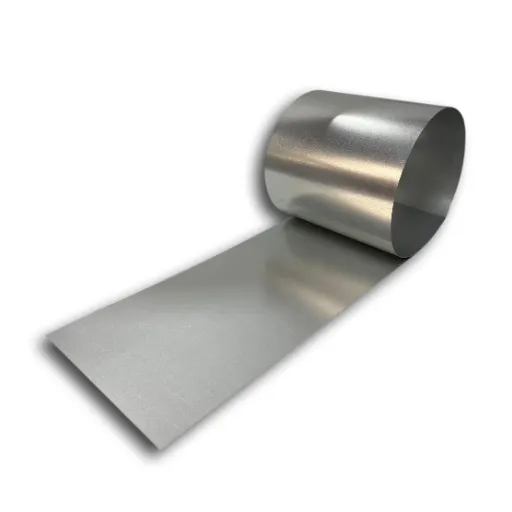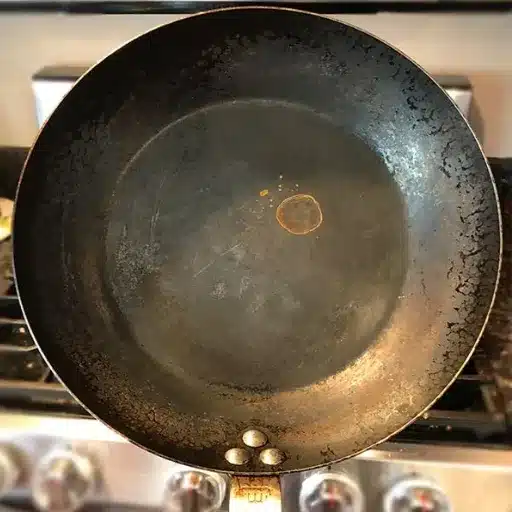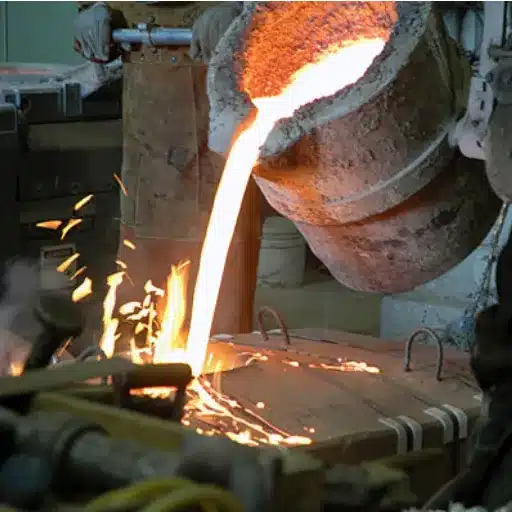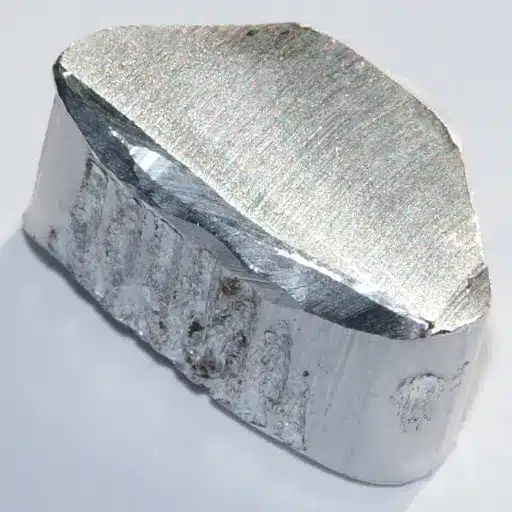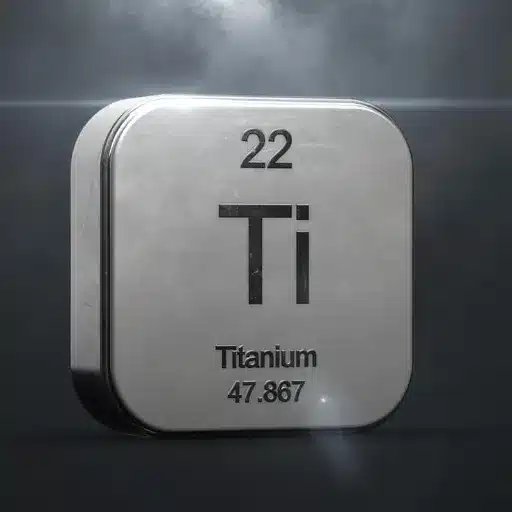When considering materials that possess strength, versatility, and durability, seamless stainless steel tubing is now ubiquitous in other industries. It is an equally important component in the automotive, aerospace, construction and even medical technology industries because of its remarkable accuracy and dependability. Have you ever thought of how such an astonishing product is made? What makes it ‘seamless’ and why does that matter so much? This article is aimed at guiding you through the entire manufacturing journey of seamless stainless steel tubing by revealing the company’s secrets, starting with extracting raw materials and ending with precise quality assessments. Utilizing modern engineering payloads, we will uncover how stainless steel becomes flawless high-performance tubes utilized around the world for a variety of purposes. We expect the readers to deepen their understanding of the industrial manufacturing world and technological innovations.
What Is the Difference Between Seamless Tubing and Welded Pipe?
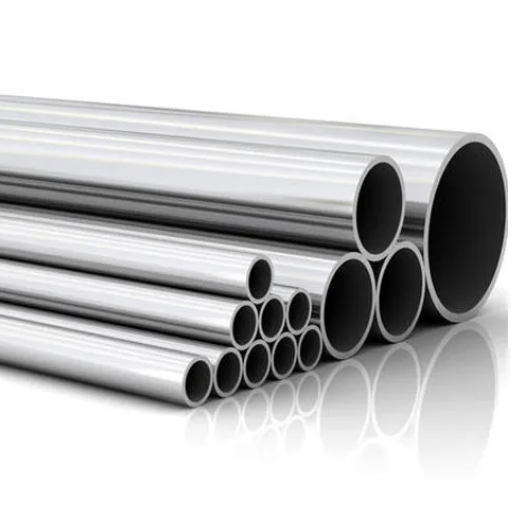
Seamless tubing is fabricated by heating a solid steel billet and cold drawing it to elongate the material into a tube without joints or welds, which strengthens its overall structure. Unlike welded pipes, seamless tubing does not contain any mechanical joints or welds, thus having wider applications. Tubes without seams are used in environments with high pressure, extreme temperatures, or any critical system because reliability is essential.
In contrast, welded pipe is manufactured by taking a flat steel plate and rolling it into a cylinder which is then welded. While not as strong as seamless tubing, welded pipe has its advantages in price and applicability where extreme durability, pressure, or resistance is not a necessity. The decision between the two is made based on the parameters of the project like pressure, temperature, and budgetary constraints.
Understanding Seamless Stainless Steel Tubing vs Welded Tubing
Evaluating important performance considerations along with one’s expertise and the industry’s research will be integral for the decision-making process of seamless or welded stainless steel tubing.
1. Manufacturing Process
Seamless tubing is made from stainless steel via extrusion, which creates tubing without a welded joint. Such tubes possess uniform construction and greater resistance to radial pressure, for example in aerospace or chemical processing and systems subject to extreme temperatures. On the opposite side, welded tubing is manufactured by welding a rolled stainless steel sheet into a tube, and later polishing the interior and exterior to eliminate the hallmark of welding. The durability of these tubes in comparison to seamless tubing is less, but improvement in manufacturing practices has enhanced the quality of welded tubes.
2. Strength & Durability
In terms of strength, seamless tubing leads the market as there are no weak points due to the weld seam. It’s ideal for applications that require high internal pressure due to its load-bearing capacity. However, in a lower-pressure setting with minimal stress, welded tubing can operate efficiently, although its strength is weaker compared to seamless tubing.
3. Cost and Availability
The cost of seamless tubing is higher due to its complicated and more expensive production process. As a result, manufacturers often have longer lead times. Welded tubing, on the other hand, has a lower cost and is more readily available. It is more economical because it can be produced in larger sizes and longer lengths which serve a variety of custom and standard applications.
4. Applications
Seamless tubing is an Industry’s choice for critical applications like oil and gas, power generation, and in heavy-duty industrial operations. Welded tubing, on the contrary, is utilized in construction and decorative works as well as in food and beverage processing where less extreme pressure is present and not a strong concern.
5. Statistical Overview
Recent reports show that global seamless stainless steel tubing is around 35-40% of the market, while the demand for seamless tubing is rising from high-performance material industries. Welded tubing captures over 60% of the market share and is known as the dominant type of tubing. It’s widely used for standard applications due to its cost-effectiveness.
Choosing the proper type of stainless steel tubing involves the evaluation of different project requirements alongside factors like strength, cost, and overall purpose. Distinctions between seamless and welded options play a critical role in decision-making to guarantee the project’s requirements will be met seamlessly.
Key Advantages of Seamless Tubes Over Welded Pipe
1. Unmatched Strength and Longevity
Seamless tubes have no welded seams; thus, they are more advantageous than welded pipes. Gaining seams makes seamless pipes ideal for use in high-pressure environments alongside needing strong structural integrity.
2. Greater Resistance to Pressure
Seamless tubes serve better for withstanding corrosion and pressure due to their lack of weld seams. This makes them very suitable to oil and gas industries which face high-pressure levels.
3. Increased Resistance to Corrosion
Seamless tubes are considered viable for marine and chemical industries as they can being submerged in corrosive substances due to lack of weld joints. This makes seamless pipes more reliable to vulnerable conditions.
4. Hygienic Inner Surface
Seamless tubes provide unrestricted flow as they do not contain weld beads on the inner surface. This is fundamental for the materials used in hydraulic systems or heat exchangers, where constant liquid or gas flow is mandatory, seamless tubes are the most suited.
5. Consistent Mechanical Properties
Seamless tubes are made to order and offer precision-engineered features. They come with reliable standards and quality, which are critical to hydraulic systems and heavy-duty machinery, ensuring reliable performance in multiple applications.
6. Diverse Size Options
Seamless pipes can be produced in smaller diameters and thinner walls than welded pipes. This adaptability makes them ideal for use in areas that require particular dimensions or precise tolerances.
7. Lower Possibility of Material Weakness
The absence of welding in the construction eliminates the seams which are often the weak links in a welded structure. This greatly reduces the risk of stress, fatigue, or vibrational failures. They are especially used in aerospace engineering and similar fields where reliability is crucial.
The combination of all these advantages makes preferring seamless tubes in a lot of industries, especially where safety, strength, and dependability are fundamental and vital constraints.
Applications Where Either Seamless or Welded Tubing Is Used
Seamless and welded tubing are two forms of pipes that are widely used throughout industries because of how their specific properties cater to the distinct needs of each industry.
1. Oil and Gas Industry
In the oil and gas industry, seamless and welded tubes have a large scope of applications as they are used in pipelines, risers, and offshore drilling equipment. The choice between the two types of tubing differs based on the pressure and the corrosion resistance needed. Seamless tubes are preferred in extreme pressure conditions, whereas cost-efficient welded tubes serve lower-pressure pipelines. An example of the growth in the oil and gas industry is the global oil and gas pipeline market which is anticipated to grow significantly in the next few years alongside investments in infrastructure exceeding $500 billion by 2027. This growth serves as an incentive for both types of tubing.
2. Automotive Industry
In the automotive industry, tubing is instrumental in fuel injection systems, exhaust systems, and hydraulic systems. Components that need extreme precision and strength such as the ABS braking system, and seamless tubing is the clear favorites. On the other hand, welded tubing suffices for exhaust systems due to their versatility and lower price.
3. Construction and Infrastructure
Seamless and welded tubing are applied in the construction field as structural supports, scaffolding, and water or gas supply piping. Due to welded tubing’s lower production cost and sufficient strength for moderate-pressure situations, it is usually preferred in large-scale projects. Meanwhile, seamless tubing is favored for critical durable non-stop bearing applications or applications needing superior endurance.
4. Aerospace Engineering
Aviation and aerospace use tubing extensively in applications such as fuel lines, hydraulic systems, and other structural components. Seamless tubing is typically used here because of the safety and performance requirements. Their uniform structure with seamless tubing along with the high-pressure capacity is crucial, especially while dealing with supersonic and stress-prone situations.
5. Healthcare and Pharmaceutical Sector
Other than welded and seamless tubes, various surgical instruments, hypodermic needles, and sterile fluid transfer systems utilize them in the medical field. Smoother internal surfaces demonstrate that welded tubes commonly serve the function of transporting sensitive fluids. In any applications requiring exceptional strength and purity seamless tubes are used.
6. Power Generation
Power plants, regardless if they are fossil fuel power plants or nuclear power plants, utilize seamless and welded tubes for functions such as boiler piping, heat exchangers, and condenser systems. Seamless tubes are a must for high-efficiency boilers because of the crippling temperatures and pressures they encounter.
Market insight indicates an unrelenting increase to the demand of both seamless and welded tubing. Innovative advancements in quality and manufacturing efficiency continue to drive this evolution. Through the utilization of modern technology, manufacturers refine their production methods to meet the ever-changing and escalating demand of these industries.
How Does the Raw Material Selection Impact Seamless Stainless Steel Tubing?
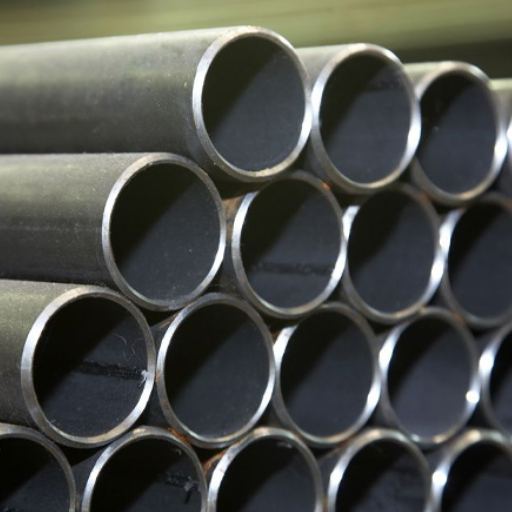
Choosing the appropriate seamless stainless steel tubing begins with the selection of high-grade raw materials that impact the quality and performance factors. Enhanced corrosion resistance, strength, and durability are all outcomes of using high-quality stainless steel. Inconsistent raw materials can lead to defects that jeopardize the structural integrity of the tubing. Further, its specific grade determines its high temperature or corrosive condition resistance. The right choice of raw materials ensures set application driving long-lasting results.
Various Types of Stainless Steel Alloys for Seamless Tubing
Stainless steel seamless tubing is produced in many alloy types that address specific industrial needs. Below are some of the most commonly used alloys of stainless steel and their properties:
304 Stainless Steel
One of the most versatile of the seamless tubing alloys is 304 stainless steel. This grade offers excellent corrosion resistance, especially for acids and chlorides at low concentrations. With around 18-20% chromium and 8-10.5% nickel, 304 is appropriate for food processing, chemical, and industrial work environments. Its strength, low cost, and wide availability make it a popular choice.
316 Stainless Steel
316 stainless steel builds on the properties of 304 with improved corrosion resistance due to the addition of molybdenum (2-3%). This alloy performs exceptionally well in harsh environments, including marine and other applications where saline solutions or strong acids are used. It is used extensively in the pharmaceutical, marine, and medical industries that require durability and strong resistance to pitting corrosion.
321 Stainless Steel
As an ultra-strong alloy used in various industries, 321 stainless steel is a titanium-stabilized austenitic alloy that has a greater resistance to intergranular corrosion after high-temperature exposure. This property makes it useful in aerospace and automotive industries where it is vital to have high-temperature oxidation, thermal fatigue, heating resistance, and corrosion resistance endurance.
Duplex 2205 Stainless Steel
This highly sought alloy is a combination of both austenitic and ferritic structures. With an impressive chromium content of approximately 22%, nickel between 4.5-6.5%, and molybdenum, this alloy offers outstanding strength while maintaining the ability to resist various forms of corrosion. This alloy is very advantageous in oil and gas processing and chemical industries that are susceptible to stress corrosion cracking.
904L Stainless Steel
A unique combination of chromium, nickel, molybdenum, and copper makes this steel супер aустенитик. The combination gives 904L exceptional resistance to sulfuric and phosphoric acid corrosion making the alloy is a preferred material for chemical work, desalination plants, and high-pressure applications while capable of withstanding chloride-induced pitting.
304 Stainless Steel and Other Common Alloys
One of the most widely utilized alloys is 304 stainless steel because it is affordable, has great versatility, and provides exceptional corrosion resistance. Also, it is an austenitic stainless steel with chromium and nickel as its two primary constituents. This characteristic along with its affordability makes it useful in other applications like kitchen appliances, food processing equipment, and even architectural components. However, 304 has comparatively lower resistance to highly corrosive environments, especially with acids or chlorides, when compared to 904L. Other common alloys like 316 stainless steel are better suited for marine or chemical environments because of their greater resistance to chlorides due to higher molybdenum content.
From Solid Stainless Steel Billet to Finished Product
A meticulous process involving complex metallurgy, precise engineering, and modern technologies transforms a solid stainless steel billet into a finished product. The process begins with selecting high-quality billets, which are cylindrical or rectangular stainless steel blocks, as the requirements of the grade, size and mechanical properties of the final product determine selection.
Depending on the properties required in the final product, the first step is either hot or cold rolling. Hot rolling requires the heating of the billet to a temperature past its rexyristalization point so that it can be shaped and formed easily. This step is frequently used for parts that need industrial grade strength, but not precision like industrial machinery. In contrast, cold rolling is carried out at room temperature which results in better accuracy in the final dimensions and surface finish making it ideal for precise parts.
After hot or cold rolling, the material might be subjected to annealing to relieve internal stresses and improve ductility. In this step, steel undergoes heating to a certain temperature and is then cooled down gradually. This process is critical for improving the ease of machining and sets the material up for additional forming or shaping processes that need to be done.
In almost all cases, some form of initial cutting is needed, which can be performed with lasers or CNC machines with extreme accuracy. For instance, lasers accomplish cutting with intricate designs and tight tolerances while ensuring little wasted material. Other processes such as polishing, grinding, and coating can later be done to change the surface to the designed finish or improve protective qualities.
Recent industry benchmark data indicates a modern process is considerably more efficient regarding energy use and yield rates. To illustrate, advanced rolling mills and CNC equipment achieve material utilization rates of over 85%, which minimizes waste and reduces production costs. Automation has also driven down processing time; some facilities report production cycles 30% faster than the conventional approach, all while meeting quality standards.
Lastly, stringent quality control guarantees that the processed stainless steel products satisfy required standards like ASTM International or ISO certifications. Non-destructive testing, particularly ultrasonic and X-ray examinations, are routinely employed to find cracks, voids, or other discrepancies within the material.
The entire sequence of operations demonstrates sophisticated processes utilized to transform solid stainless steel billets into components for construction, aerospace, and medical devices. It marks a unique shift in the steel industry to meet growing demand for steel that is reliable, precise, and efficient.
What Is the Manufacturing Process for Seamless Stainless Steel Tubing?
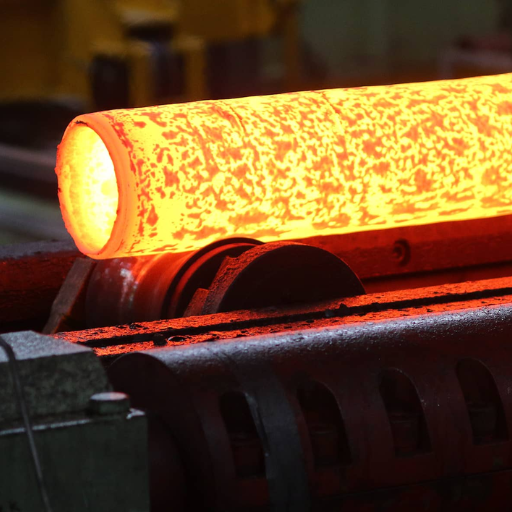
To manufacture seamless stainless steel tubing, a solid stainless steel billet serves as the starting point. The first step is heating the stainless steel billet to a sharp temperature so it can be pierced to form a hollow tube. Then, further hollowing is added with rollers or a pilger mill until precise measurements are obtained. Some of the final steps include extensive heat treatment and corrosion resistance to better the mechanical features of the steel. Finally, various finishing touches are completed such as quality inspections, thorough testing and surface finishing to guarantee the stainless steel tubing fulfills the requirements and specifications.
The Piercing and Extrusion Process
The seamless tubing production requires a strong focus on the piercing and extrusion process. A cylindrical billet made from steel or other alloys is placed in a heating system that raises the temperature to a uniform level of 2200°F (1200°C). At this stage, a mandrel or piercing tool is capable of creating a hollow cavity effortlessly because pressure is applied to the heated steel block. Upon completion, the newly created block is hollow inside instead of solid.
Next, the hollow billet experiences extrusion. The hollow tube is either pushed or pulled through a die with a specific amount of force at this stage. This step achieves an adequate outer diameter and wall thickness. The level of precision and uniformity in extrusion, even for intricate shapes and measurements, is greatly enhanced by modern technologies. It is noted that the rate of extrusion differs by material; however, it is usually between 160 and 200 feet per minute.
After the above processes, cooling steps meant to freeze in place the structure of the metal are then applied. This is followed by non-invasive quality inspections like ultra-sound checks or eddy current checks to confirm the tubes fit the stringent requirements. Seamless tubes with exceptional ratios of strength and weight, remarkable corrosion resistance, and seamless construction are demanded by aerospace, automotive, and energy industries relying on this method.
Hot Extruded Seamless Pipe Production
Extrusion has been refined due to new industrial processes, and the hot extruded seamless pipe production has achieved equal advancement. A solid metallic workpiece (billet) is prepared from a block of alloyed materials such as stainless steel, alloy steel and carbon steel which is industrially heated to temperatures of over 650°C. Extrusion is accomplished through a specially designed extrusion press which lessens the bilateral pressure of the heated billet through a die. The resultant pipes are smooth both internally and externally, whilst all the parameters, including length, diameter, and wall thickness, are identical.
Hot extrusion is one of the most advanced pipe machining methods, allowing for the obtaining of seamless pipes that are very reliable, thermally stable, and much stronger than welded pipes subjected to alternating high and low-pressure conditions. Recently, estimates show that the amount of seamless pipes required worldwide will rise by a supply annual growth rate of approximately 6.5% during the next decade, which will be a result of an increase in demand from oil and gas, construction, and power generation industries.
Examples of technological progress include automated temperature, pressure, and material flow controls that monitor the extrusion system in real-time, in addition to sophisticated lubricants and cooling systems that improve surface finish and achieve tighter tolerances. Such technologies are setting new standards in seamless pipe production for a myriad of industries that require sophisticated performance capabilities.
Creating Seamless Tube Shape Through Mandrels
Mandrels have specific importance to the manufacturing proses of seamless tubes since they help achieve the correct shape, size, and integrity of the final product. A mandrel is placed into the hollow tube to support the internal cavity while the material is shaped externally during the extrusion or drawing process. This method helps avoid distortion and guarantees uniform wall thickness throughout the tube. This is important for applications where high-pressure oil and gas pipelines automotive parts, and aerospace systems are utilized.
Newer floating mandrels used in rotary piercing and tube drawing possess tailored features to boost performance and precision, such as enabling free movement. Optimized designs of the mandrel improve performance as they reduce wall thickness variation by up to twenty percent. Additionally, the integration of alloy mandrels with modern coatings reduces wear and tear, therefore increasing production reliability alongside service life.
The seamless tube is manufactured with efficiency and quality in mind at every stage of production. Precise machinery coupled with innovative sciences is what allows meeting almost any framework when it comes to mandrel-based shaping techniques.
How Does Cold Drawing and Cold Rolling Work in Tubing Production?
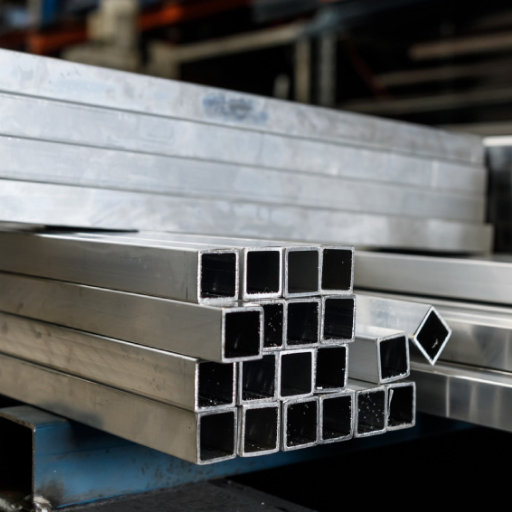
The dimensions of a tubing, its surface finish way, and mechanical attributes of a tubing are done using cold drawing and cold rolling. A tube is reduced in diameter when it is pulled through a die during cold drawing. This process also improves the strength of the tube via strain hardening. While cold drawing improves the strength of a tube, cold rolling improves its surface finish by passing the tube under pressure rollers. Both processes are done at room temperature to improve the quality and allow for high tolerance of the tubing.
Cold Drawing Process for Precise Diameter and Wall Thickness
Obtainable with the cold drawing process is the precision wall thickness and the dimension of the tubing. A metal tube is drawn through a die which reduces its diameter to the desired size and refines wall thickness. Accuracy is key for industries such as aerospace, automotive, and medical and this method meets their needs.
Cold drawing also helps improve the mechanical properties of the material, increasing its tensile strength and surface finish. Research indicates that the yield strength of metal can be increased by cold drawing by 30-50%, increasing the amount of stress the material can handle. It also allows for tight tolerance control, with some processes achieving tolerances of ±0.0005 inches, depending on the material and die setup.
In addition, with new advancements in die and lubricant technologies, reduced friction during the drawing process increases productivity while also lowering surface blemishes. This guarantees the fabrication of smooth high-quality tubes necessary in demanding applications. The cold drawing process is an essential method for accurate and precise specification industries.
Cold Reduction Techniques for Seamless Stainless Steel Coil
Cold reduction has great significance in the crafting of seamless stainless steel coil as it creates greater reliability in the dimensions, strength, and surface quality of the steel. This process is done by refining the thickness of the material at room temperature by sending it through several cold rolling mills. Precision industry requirements can be met within advanced machinery that provides custom controls where reductions down to 0.005 inches are possible.
High-precision rolling mills allow for the most significant advancement achieved in cold reduction. These mills offer more control for calibrated consistency as they allow for equal coil thickness, tension, and compression levels to be monitored and adjusted on computer systems. These improvements in technology make industry tolerances of +/- 0.0005 inches or better achievable. Such precision is paramount in medical and aerospace devices, and in energy systems for dependability and precision.
With modern practices in cold reduction, the use of optimally formulated lubricants and higher rolling speeds improves efficiency making energy use 30% lower than older techniques. Other technological advancements enable metrology for volume and temperature to preserve or improve the inherent traits of steel like mechanical strength, corrosion resistance, and resilience during cold reduction for improved cooling, heat treatment, and cooling systems.
Recent industry studies indicate that seamless stainless steel coils made by sophisticated cold reduction techniques undergo an increase in tensile strength of 15% while retaining superior elongation characteristics. They are ideal for applications that require flexibility and durability simultaneously, especially in demanding environments.
Above all, the development of cold reduction techniques continues enhancing the quality and seamless stainless steel coils to satisfy modern industrial needs.
Where Are Seamless Stainless Steel Tubes Used?
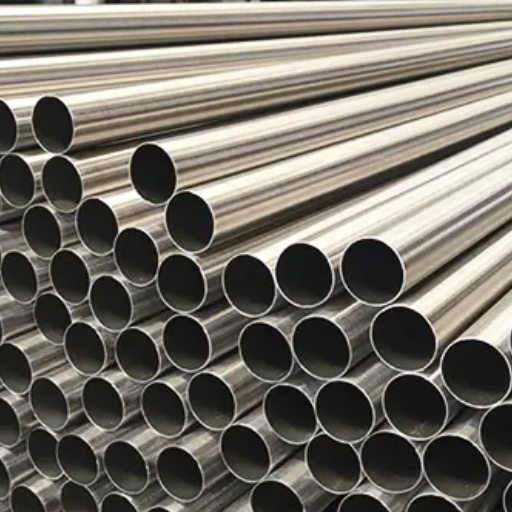
Seamless stainless steel tubes are applied in industries with a high demand for reliability and durability. They are commonplace in oil and gas pipelines, chemical processing plants, power generation facilities and automotive systems. Moreover, they find extensive applications in medical devices, food processing apparatus, and construction where they need to withstand corrosion and high-pressure environments. Their strength and versatility are vital to industrial and specialized applications.
Applications of Stainless Steel Tubing in Transport Industries
Stainless steel tubing is very important to the transportation industry because of its strength, lightweight, and corrosion resistance. It is employed in making exhaust systems, fuel lines, and even in the automobile and aircraft industries. For example, stainless steel is perfect for the hydraulic systems of aircraft and heat exchangers because of its ability to control temperatures.
There is an increasing need for stainless steel tubing in electric vehicles as well (EVs). Recent research indicates that the global EV industry is set to expand by more than twenty percent every year from 2023 to 2030. The rising demand is creating a need for stainless steel parts which aid in structural designs to cut down weight, enhancing energy efficiency and driving range.
Moreover, stainless steel tubing is used in making the external part of the trains, the brake systems, handrails, and even the structures of the trains in the railway industry because of its ability to withstand harsh outdoor climates. For example, Stainless steel tubing has the structural strength to support the sleek aerodynamic shapes of high-speed trains which helps the trains to go faster and be stable at high speeds.
Along with being fully recyclable, the incorporation of stainless steel tubing in transport offers additional sustainability benefits. These features reinforce its integral contribution to the development of modern transportation technology systems, fulfilling operational requirements and environmental targets simultaneously.
Seamless Stainless Steel Coil Tubing for Liquid Transport
Seamless stainless steel coil tubing offers liquid transport across a wide array of industries. It is capable of withstanding extreme pressures and temperatures ensuring the safe and reliable transport of liquids such as oil, gas, water, and chemicals. Stainless steel’s tubing also prevents contamination and marks its purity, making it ideal for food and beverages, pharmaceuticals, and petrochemicals.
Seamless coil tubing has recently been enhanced for greater durability and improved economic benefits. For Example, Grades 316L and 304 stainless steel are frequently selected because of their flexibility and high corrosion resistance. This type of tubing sustains more than 20,000 psi and functions within -425°F to over 1200°F. In addition, its uninterrupted length decreases the requirement for connectors which minimizes leaks and increases the reliability of the system. Engineers are obliged to admit seamless coil tubing has a lower maintenance demand which improves operational costs over time.
To keep up with the rising demand in the industry, manufacturers now provide specific applications with coil tubing extending over several kilometers in length. This development has proven especially useful for the oil and gas extraction industry, since longer coils can be more easily deployed in extreme conditions, such as during deep-sublimation drilling. Coupled with its long lifespan and recyclability, seam stainless steel coil tubing continues to contribute significantly towards the development of efficient and sustainable systems for liquid transport around the planet, galas, enabling ever more hostile environments to be efficiently sustained, referenced and overcome.
How Tubing Meets Industrial Requirements
Seamless stainless steel coil tubing is made greater with modern innovations, meeting additional industrial requirements due to the ease of customization with the quality of the material used. Focused on primary circulation and structural strength elements, seamless stainless steel coil tubing is designed with greater durability, resistance against corrosive elements, and the ability to be used in different environments and applications. For the more specialized sectors like oil and gas, chemical processing, and power generation, the tubing is designed to endure extreme temperatures highly and high-pressure conditions to circumvent boundaries. Recent advances have also improved the material’s kallossyitenach tensile strength, making it capable of enduring over 20,000 psi in certain conditions, critical for deep-sea exploration and other high-stress situations.
Also, chlorides, acids, and other dangerous chemicals will not affect its longevity. Data shows seamless tubing can last up to 25 years without significant deterioration, reducing cost and downtime. Also, advances in manufacturing have changed the seamless stainless steel coil tube’s ability to have exact tolerances which allow it to be integrated seamlessly with precision industrial systems. All of these factors make seamless stainless steel coil tubing the best choice when efficiency, safety and eco-friendliness are needed.
Reference Sources
-
On the Weldability of Thick P355NL1 Pressure Vessel Steel Plates Using Laser Welding:
- Discusses the production of seamless steel pipes and compares it with laser-welded alternatives.
- Highlights the high cost of seamless pipe production and explores the potential of laser welding for cost efficiency.
- Methodology includes fiber laser welding experiments on stainless steel sheets and analysis of weld quality.
-
The Ability to Clinching as a Function of Material Hardening Behavior:
- Examines the use of high-alloy chromium-nickel stainless steel in seamless pipes, particularly in aviation.
- Focuses on material properties and their impact on forming processes like clinching.
- Methodology involves shear-tensile testing to evaluate joint quality in seamless pipe applications.
-
Seamless Steel Tubes and Pipes for Boilers:
- Focuses on the production of seamless stainless steel tubes for high-temperature applications like boilers.
- Describes an original process for creating fine-grained microstructures in 18Cr austenitic stainless steel tubes.
- Methodology includes microstructural analysis and performance testing under steam oxidation conditions.
Frequently Asked Questions (FAQs)
Q: What is the first step in producing seamless stainless steel tubing?
A: The manufacturing process begins with selecting high-quality stainless steel, which is then extruded into a hollow form to create the initial tube shape. This process sets the stage for achieving precise outside diameter and inside diameter measurements.
Q: How does the pilgering process work in seamless stainless steel tubing production?
A: Pilgering involves cold working the tube by reducing its outside diameter and wall thickness. This is achieved through a series of compressive forces that also enhance the tube’s strength and corrosion resistance, making it ideal for various applications.
Q: What are the advantages of using seamless stainless steel tubing?
A: Seamless stainless steel tubing offers superior strength and corrosion resistance, making it the choice for many industrial applications. Its uniform structure ensures consistent performance, and it is primarily used in situations where reliability is crucial.
Q: Why is cold pilgering preferred over other methods?
A: Cold pilgering is preferred because it allows for precise control over the tube’s dimensions, specifically the outside and inside diameters. It also improves the mechanical properties of the tubing, such as its strength and durability.
Q: What are some common uses for seamless stainless steel pipes?
A: Seamless stainless steel pipes are used for transporting fluids and gases in industries such as oil and gas, chemical processing, and pharmaceuticals. They are also used in the fabrication of pipe fittings and other components where high performance is required.
Q: How does cold drawing reduce the tube dimensions?
A: Cold drawing reduces the tube dimensions by pulling the tube through a die, which decreases both its outside diameter and inside diameter while maintaining precise id and wall thickness tolerances.
Q: What is the significance of maintaining precise inside diameter and wall thickness in tubing?
A: Maintaining precise inside diameter and wall thickness is essential for ensuring the tubing’s compatibility with other components and its ability to withstand operational pressures. Accurate measurements are critical for seamless integration into various systems.
Q: Are there several types of seamless stainless steel pipes?
A: Yes, there are several types of seamless stainless steel pipes, each designed for specific applications. Variations may include differences in diameter, wall thickness, and steel grade, all tailored to meet diverse industry requirements.
Q: What role do tube reducers play in the manufacturing process?
A: Tube reducers are used to adjust the tube’s dimensions, particularly when transitioning between different sizes or specifications. They help achieve the desired outside diameter and inside diameter for various applications.

